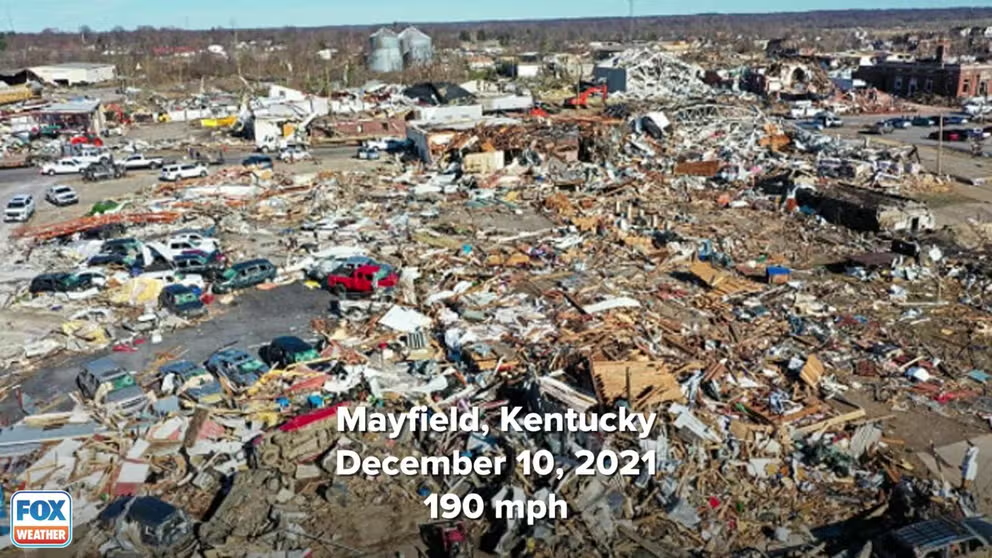NASCAR drivers whip around tracks at speeds as fast as an EF-3 tornado, Category 5 hurricane
The forecast in Florida for race day on Sunday continues to be less than ideal. In fact, the FOX Forecast Center expects rounds of precipitation to impact Florida on Saturday, with more rain likely on both Sunday and Monday.
NASCAR speeds as compared to the most powerful storms
Take a look at some storms with strong wind speeds compared to the speed of a NASCAR car.
DAYTONA BEACH, Fla. – It’s that time of year again when racing fans from across the U.S. flock to Daytona International Speedway in Daytona Beach, Florida, to watch as drivers race around the track at the 2024 Daytona 500 – well, hopefully.
The forecast in Florida for race day on Sunday continues to be less than ideal. In fact, the FOX Forecast Center expects rounds of precipitation to impact Florida on Saturday, with more rain likely on both Sunday and Monday.

(FOX Weather)
Forecast models are showing 1-2 inches of rain for most of Florida, with the eastern coast from the Fort Pierce area up through Melbourne along the Space Coast and into Daytona Beach, possibly seeing between 2 and 3 inches of rain.
That means rain delays are likely and could even lead to the postponement of the race altogether.
COULD STORMS DELAY THE DAYTONA 500?
If and when drivers start their engines and take off on their 200-lap journey, they definitely won’t be going the speed limit.
The average speed that NASCAR cars race around the track is about 200 mph.
Those speeds are as strong as winds in an EF-3 tornado or faster than a Category 5 hurricane.
Take a look at some storms with strong wind speeds compared to the speed of a NASCAR car.
Tornadoes
Moore, Oklahoma
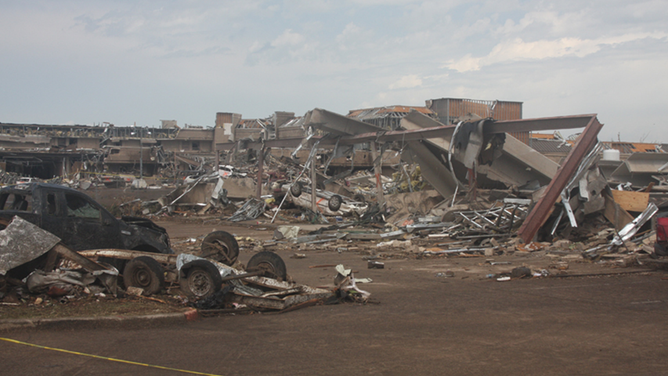
(NWS meteorologist Doug Speheger)
On May 20, 2013, a tornado outbreak produced the most deadly and devastating tornado of the year for Oklahoma and the United States, according to the National Weather Service.
An EF-5 tornado with winds of 210 mph tore through the community of Moore, Oklahoma, and parts of southern Oklahoma City. In all, 24 people were killed by the violent tornado.
Joplin, Missouri

Damage is seen one day after a tornado tore through Joplin killing at least 122 people on May 24, 2011 in Joplin, Missouri.
(Benjamin Krain/Getty Images)
On May 22, 2011, one of the deadliest tornadoes in U.S. history struck the town of Joplin in Missouri.
The EF-5 tornado had winds over 200 mph. In total, 158 people were killed, and more than 1,000 people were injured.
According to the National Weather Service, the Joplin tornado was the first single tornado that resulted in over 100 deaths since the Flint, Michigan, tornado in 1953.
Bridge Creek-Moore, Oklahoma

NNOAA'sNational Severe Storms Laboratory captured radar images of the powerful tornado on May 3, 1999.
(NNOAA'sNSSL)
On May 3, 1999, 74 tornadoes touched down across two states in less than 24 hours.
One of those tornadoes was an EF-5 that produced the strongest winds ever recorded, according to NOAA's Storm Prediction Center.
Winds were estimated to be about 301 mph.
The tornado was on the ground for nearly an hour and a half, cutting a 38-mile path of destruction through Chickasha, south Oklahoma City and the suburbs of Bridge Creek, Newcastle, Moore, Midwest City and Del City, according to the National Weather Service.
In total, 46 people were killed, and more than 800 people were injured.
Tuscaloosa-Birmingham, Alabama
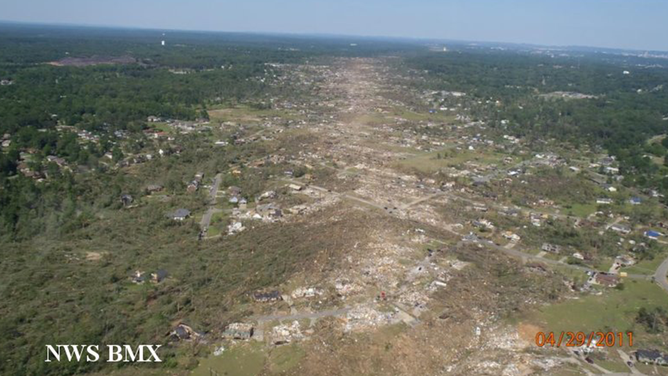
This National Weather Service photo shows the path of destruction from the Tuscaloosa-Birmingham tornado on April 27, 2011.
(National Weather Service - Birmingham)
On April 27, 2011, an EF-4 tornado with winds of 190 mph touched down in Greene County, Alabama, and was on the ground for more than 80 miles, cutting a path of destruction through Tuscaloosa and the Birmingham areas.
At its strongest, the National Weather Service says the tornado was 1.5 miles wide.
A total of 65 people were killed, and at least 1,500 people were injured.
Mayfield, Kentucky

MAYFIELD, KENTUCKY - DECEMBER 12: An aerial photo shows a damage as cleanup efforts continue after tornado hit Mayfield, Kentucky, United States on December 12, 2021. (Photo by Tayfun Coskun/Anadolu Agency via Getty Images)
On December 10, 2021, a tornado outbreak occurred in America's Heartland.
MAYFIELD TORNADO SURVIVORS STRUGGLING TO REBUILD 2 YEARS AFTER DEADLY TWISTER
One of those tornadoes, which tore through the community of Mayfield, Kentucky, was rated an EF-4 and was on the ground for 165.7 miles between the Kentucky/Tennessee border and Beaver Dam, Kentucky.
The tornado had winds of 190 mph and was on the ground for nearly three hours.
Hurricanes
Labor Day Hurricane
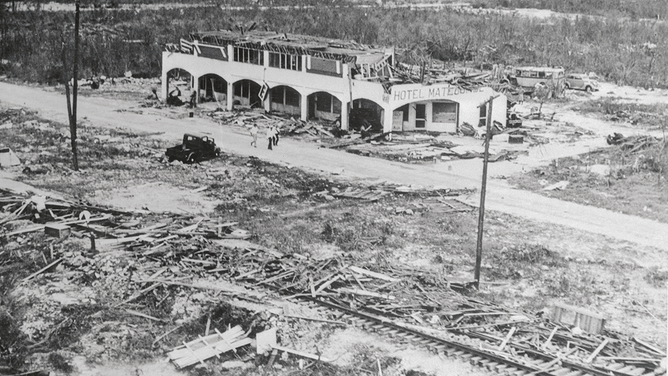
(Original Caption) Sweeping in from sea, the hurricane smashed this hotel like so mush tinder wood, as it struck with full force at Matecumbe Key, near Carysfor Light. All along the Keys are scenes like this, bearing grim evidence of the fury that snuffed out 300 lives.
(Photo by © Bettmann/CORBIS/Bettmann Archive) / Getty Images)
In early September 1935, a powerful storm, later known as the Labor Day Hurricane, swept across the Florida Keys with winds of at least 185 mph.
It's estimated that more than 400 people were killed by the storm.
Hurricane Camille
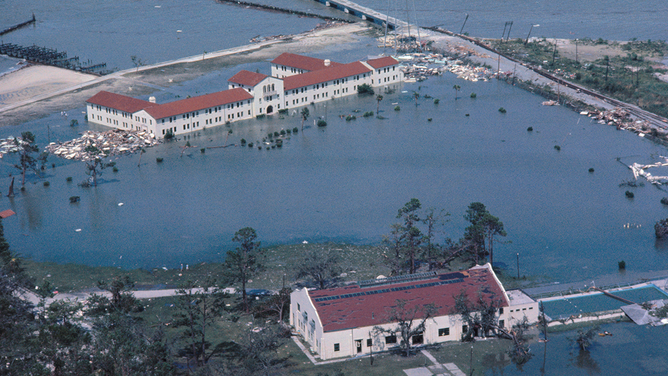
Aerial views made 8/18 of the devastation wrought by Hurricane Camille after the big storm lashed ashore with winds of nearly 200 miles per hour. Interiors of homes were gutted and in some cases entire homes were flattened by the worst hurricane to hit the U.S. mainland in this century.
( Bettmann / Contributor / Getty Images)
On the night of August 17, 1969, Hurricane Camille made landfall near Waveland in Mississippi as a Category 5 storm.
The National Weather Service estimates the storm had winds of about 175 mph when it made landfall and caused a storm surge of 24.6 feet.
Nearly 260 people were killed as a result of the storm.
Hurricane Andrew
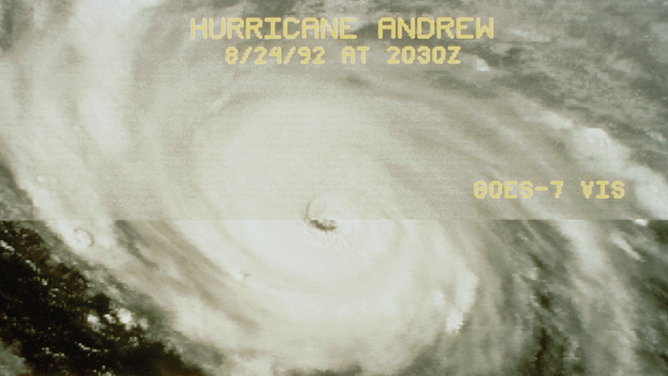
A split image shows Hurricane Andrew as seen from GOES-7 (Geostationary Operational Environmental Satellite) , top, along with a simulation of the view from NONOAA'sOES-I, slated to be launched in the spring of 1994. GOES-I will distinguish 1024 different shades of gray in visible cloud images like this one (lower half of image).
(Corbis via Getty Images)
Hurricane Andrew was a powerful Category 5 hurricane that slammed into South Florida on August 24, 1992, making landfall first in Elliott Key in Biscayne National Park and then near Homestead, with winds of 165 mph.
A total of 65 people were killed as a result of the storm.
Hurricane Michael
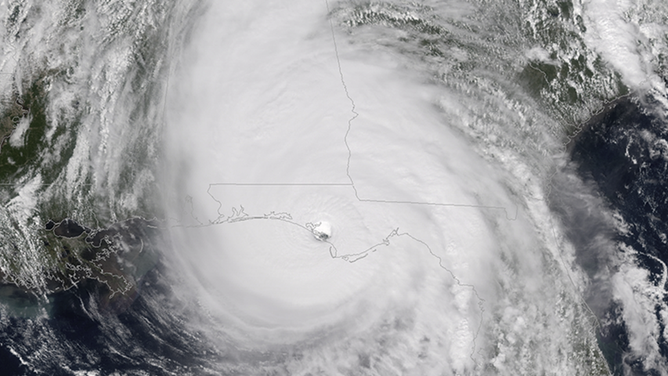
NONOAA'sOES-East captured this image of Hurricane Michael as it came ashore near Mexico Beach, Florida on Oct. 10, 2018. According to the National Hurricane Center, Michael intensified before landfall with maximum sustained winds of 160 mph, heavy rainfall, and deadly storm surge.
(NOAA)
On October 10, 2018, Hurricane Michael slammed into Mexico Beach, Florida, as a powerful Category 5 storm with winds of 160 mph.
It was the first Category 5 storm to hit the United States since Hurricane Andrew in 1992.
It was also the strongest storm to hit the Florida Panhandle and the second Category 5 to hit the Gulf Coast. The first was Hurricane Camille in 1969.
According to NOAA, Hurricane Michael produced devastating winds and storm surge and was directly responsible for 16 deaths in the United States.
